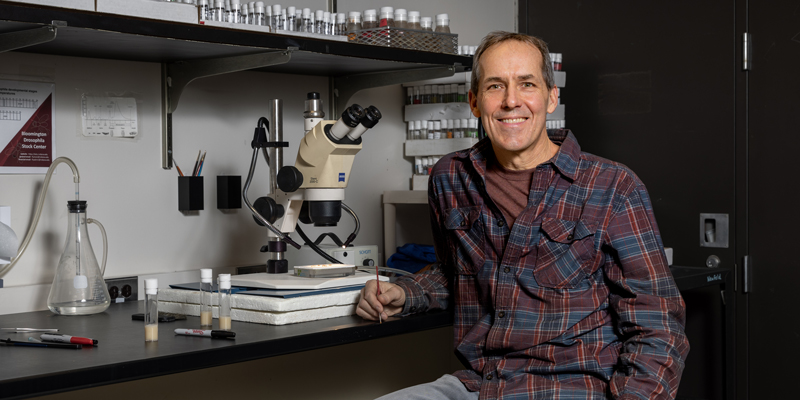
It’s perhaps the ultimate in resilience to conditions. In times of plenty, cells tap the outside world for the energy and materials they need to live and grow. But when resources are scarce, they turn to recycling components of worn-out parts instead. Organelles known as autophagosomes become activated. Cruising the insides of the cell, they engulf cytoplasm, proteins, and organelles that are past their “best by” date and carry them to lysosomes, which degrade them into molecules that can then become raw materials to build what’s needed.
“Autophagy is a way that the cell can survive low-nutrient conditions,” says GCD professor Thomas Neufeld. “It’s all about breaking down cytoplasm into building blocks that can be used for energy or for biosynthesis.”
Understandably, this process needs to be tightly regulated, lest cells start degrading components they still need—or, on the flip side, let defunct parts pile up like last week’s leftovers in the far corner of the refrigerator. Exactly how it’s controlled is the focus of a new four-year grant Neufeld recently was awarded by the National Institute of General Medical Sciences. Specifically, Neufeld is looking at how a ubiquitous enzyme known as TOR, best known for its role in promoting growth, tells the cell when and how to ramp up autophagy, and when to ramp it down again.
“TOR really seems to have a major role in controlling this, especially in response to cell nutrients, which is a big part of how a cell decides at what rate to have autophagy going,” Neufeld says. “If the cell is well fed, TOR is on and happy and sending the signals and telling the cell to grow and turning off autophagy—or at least turning down autophagy. And then if a cell finds itself in poor nutrient conditions, TOR is turned off, growth is shut off, and autophagy gets activated.”
Neufeld and team will use tools they’ve developed for studying subcellular activity in fruit fly larvae to explore three poorly understood parts of the process. First, they will investigate the role of the enzyme PKA, which interacts with insulin receptors, in telling TOR to initiate autophagy. Second, they will explore how nutrients and TOR signaling affect the ability of autophagosomes to fuse with lysosomes and alter their internal chemistry. Finally, they’ll look at how feedback loops keep the degradation process within safe upper and lower limits.
Neufeld says autophagy historically has been understudied by cell biologists, who have focused instead on processes such as transcription and translation that build, not destroy, subcellular components. “Because of that, there are a lot of mysteries, a lot of remaining questions we can address,” he says.
The research will not only answer basic questions about how a cell sustains itself in times of adversity, but also provide insights of value to treating disease in humans. In recent years, researchers have discovered that autophagy gone awry can contribute to tumor growth, neurodegeneration, inflammatory and immune disorders, and more.
“It’s amazing how threaded through human health autophagy seems to be, and in complicated ways,” Neufeld says. “That’s one of the reasons for trying to get at some of these pathways and basic mechanisms.”